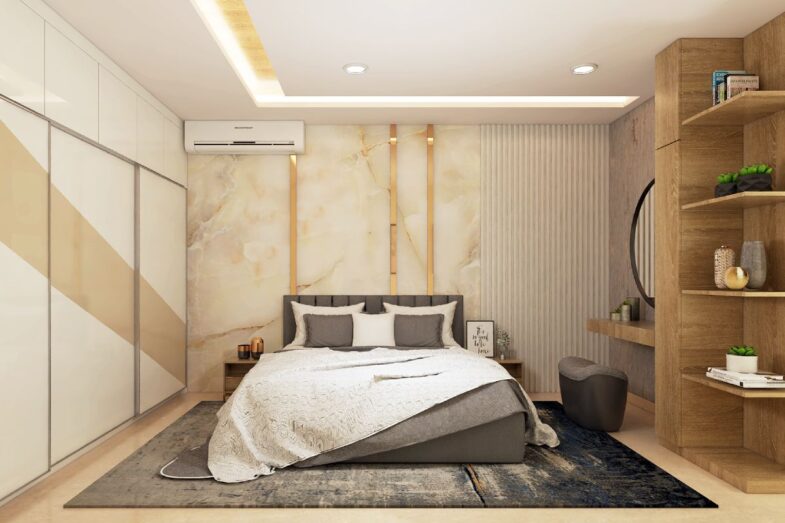A bedroom should be a sanctuary, a place where you can unwind and rejuvenate after a long day. Your bedroom’s design plays a significant role in creating a relaxing and comfortable atmosphere. With the right elements in place, it can be transformed into the perfect retreat. In this blog post, we will explore various bedroom interior design tips to help you achieve a serene and inviting space.
1. Setting the Atmosphere: Color Palette and Lighting
The color palette you choose for your bedroom sets the tone for the entire space. Opt for calming colors such as soft blues, greens, and neutrals to create a soothing atmosphere. Lighter hues can also make the room feel more spacious and airy. Avoid overly bold or dark colors, as they can feel heavy and disrupt the sense of relaxation.
Lighting is another crucial element in setting the atmosphere of your bedroom. Layer your lighting to achieve a warm and inviting ambiance. Use a combination of ambient lighting from ceiling fixtures, task lighting for reading or dressing, and accent lighting to highlight decorative elements. Consider dimmer switches to control the intensity of your lights and create a more relaxing environment.
2. Unique Cabinets: Storage Solutions and Style Statement
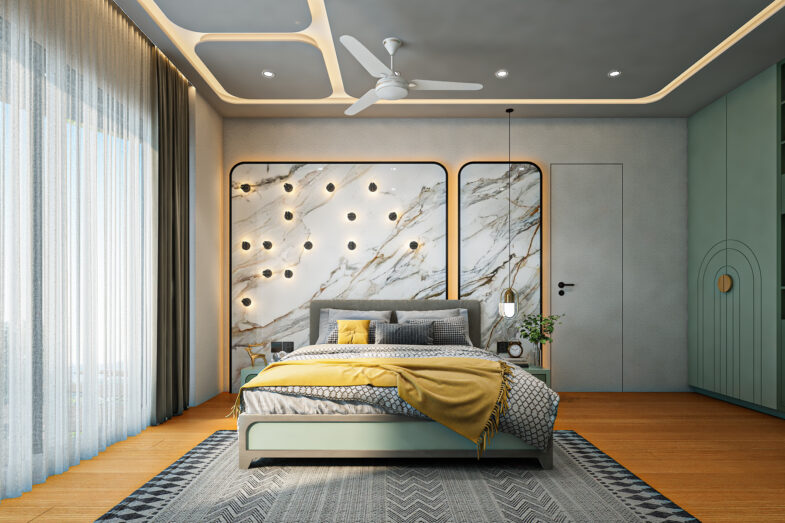
Source: kreatecube.com
Cabinets can serve as both functional storage solutions and stylish design statements in your bedroom. These versatile pieces come in various shapes, sizes, and styles to suit your needs and aesthetic preferences. Consider using a unique accent cabinet as a nightstand for added storage or as a focal point to showcase your favorite decor items.
When selecting an accent cabinet, consider its purpose and the amount of storage space required. Opt for a piece that complements your bedroom’s overall design and color scheme. Additionally, look for cabinets with interesting details, finishes, or hardware to create a unique and eye-catching element in your bedroom.
3. Choosing the Right Bed: Size, Style, and Mattress
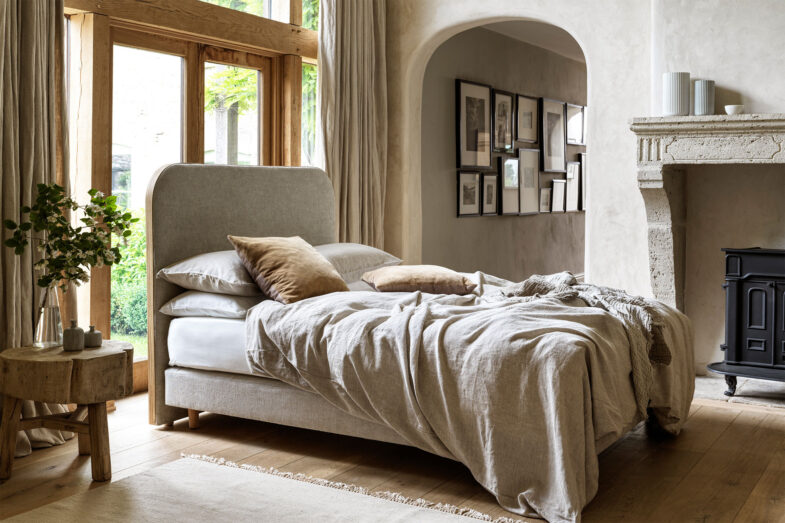
Source: countryandtownhouse.com
The bed is the focal point of your bedroom, so it’s essential to select the right size, style, and mattress. Consider the dimensions of your room and choose a bed that fits comfortably without overwhelming the space. A bed that’s too large can make the room feel cramped, while one that’s too small may not provide the necessary support and comfort for a good night’s sleep.
When it comes to style, choose a bed frame that complements your overall bedroom design. From sleek modern platforms to traditional four-poster beds, there’s a style to suit every taste. Finally, invest in a high-quality mattress that offers the right balance of support and comfort for your individual needs. A good mattress can significantly improve your sleep quality, ensuring you wake up feeling refreshed and revitalized.
4. Layering Textiles: Sheets, Blankets, and Pillows for Comfort
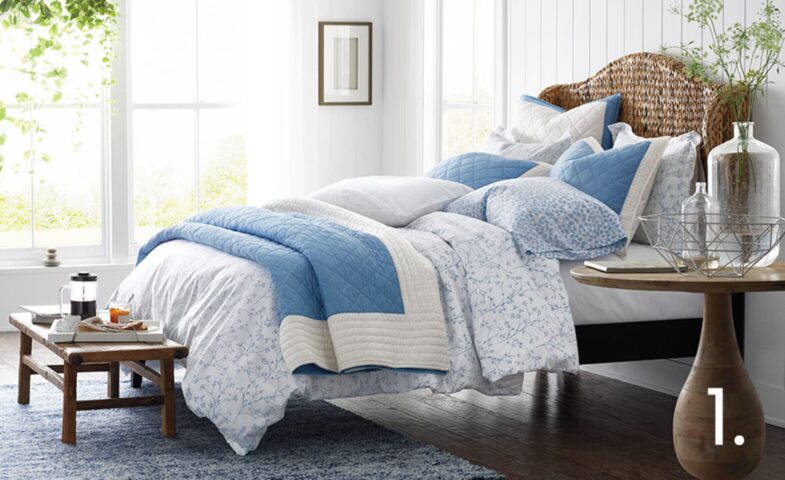
Source: thecompanystore.com
Start with soft, high-quality bed sheets in breathable materials such as cotton or linen. Add a plush comforter or duvet, and consider layering a quilt or throw blanket for extra warmth and texture.
Pillows play a vital role in both comfort and style. Use a combination of sleeping pillows and decorative throw pillows to create an inviting and visually appealing bed. Choose pillow covers in coordinating colors and patterns to tie the room’s design together.
5. Selecting the Perfect Nightstands: Functionality Meets Design
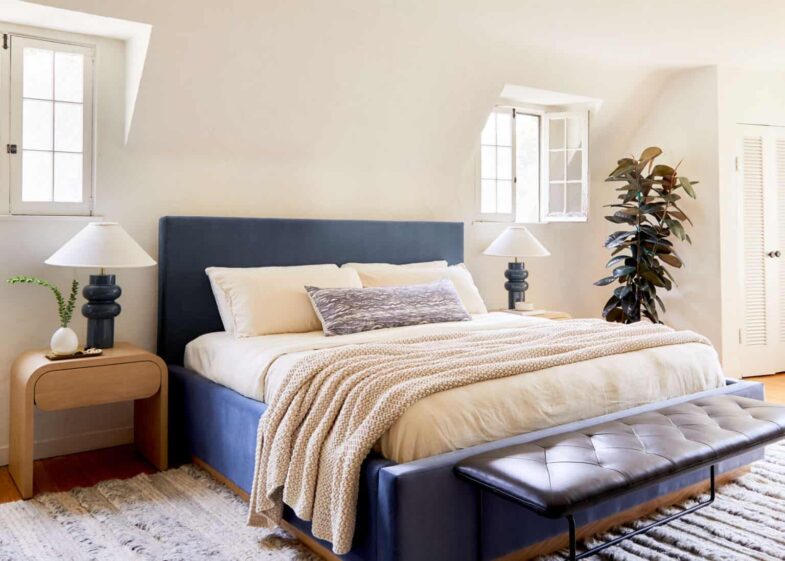
Source: stylebyemilyhenderson.com
Nightstands are essential for keeping your bedtime essentials within reach, such as a lamp, book, or glass of water. Choose nightstands that offer the right balance of functionality and style. Consider the height of your bed and select a nightstand that aligns well with your mattress to ensure easy access to your items. Opt for nightstands with drawers or shelves to provide extra storage space for your belongings.
When it comes to design, select nightstands that complement the style of your bed and other furniture pieces in the room. You can also choose to make a statement with bold or unique nightstands that stand out as a design feature in their own right.
6. Window Treatments: Balancing Privacy and Natural Light
Window treatments play a vital role in achieving a relaxing and comfortable bedroom environment. They help to control the amount of natural light entering the space, as well as provide privacy. Choose window treatments that complement your room’s design while offering the right balance of light and privacy.
Curtains, blinds, and shades are all popular window treatment options, each with its own unique characteristics. Consider blackout curtains or shades for optimal light control and privacy, or opt for sheer curtains to let in more natural light while still providing a sense of privacy. Layering window treatments, such as combining blinds with curtains, can offer additional flexibility in controlling light and privacy levels.
7. Incorporating Artwork and Wall Decor: Personalizing Your Space
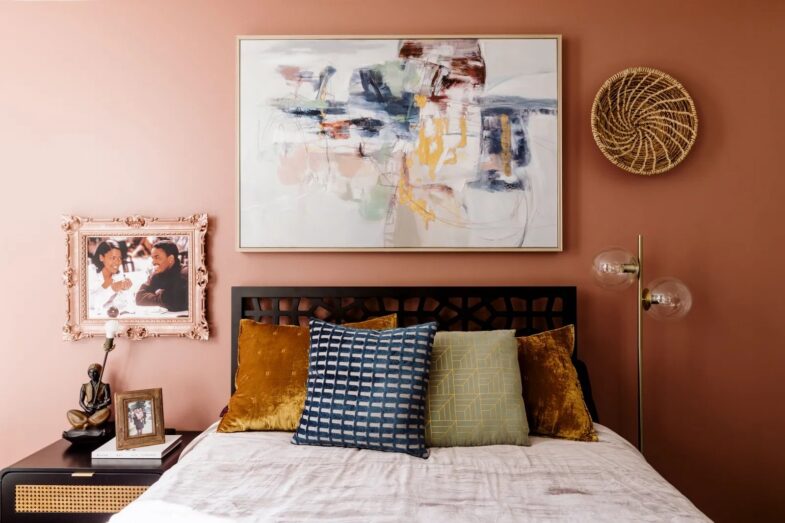
Source: architecturaldigest.com
Adding artwork and wall decor to your bedroom can infuse your personality into the space, making it feel more unique and inviting. Choose pieces that resonate with you and reflect your style and interests. This could include paintings, photographs, prints, or even sculptural elements.
When selecting artwork, consider the size and scale of the pieces in relation to your room’s dimensions. Opt for larger pieces to create a focal point or use smaller pieces to form a gallery wall. Be mindful of the color palette and style of your chosen artwork to ensure it complements the overall design of your bedroom.
8. A Cozy Seating Area: Adding Comfort and Relaxation
Creating a cozy seating area in your bedroom can provide additional space for relaxation, reading, or simply enjoying a cup of tea. Incorporate a comfortable chair or chaise lounge, along with a small side table for added convenience. If space allows, consider adding a small loveseat or even a window seat to create an inviting nook.
Choose seating that complements the style of your bedroom, and consider adding decorative pillows or a throw blanket for added comfort and visual appeal. A cozy seating area can transform your bedroom into a multifunctional space, perfect for both rest and relaxation.
Conclusion
Creating a relaxing and comfortable bedroom is an essential aspect of promoting overall well-being and improving the quality of your sleep. By incorporating these bedroom interior design tips you can transform your space into the ultimate sanctuary for rest and rejuvenation. Carefully consider each element, from the color palette and lighting to furniture selection and organization, to create a harmonious and inviting atmosphere that caters to your personal needs and style preferences. With a well-designed bedroom, you can look forward to a serene retreat that offers comfort and relaxation at the end of each day. Happy decorating!

